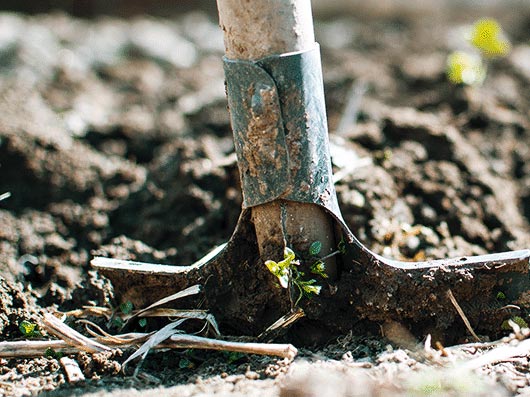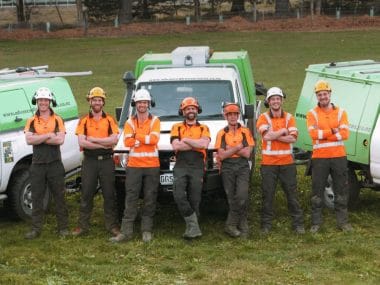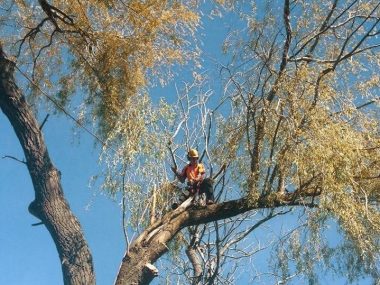Think right soil, right space, right light.
Will your tree need shade or sun? Wet soil or dry? Avoid planting large trees under or near power lines. Also remember that tree roots spread well beyond their branches; so pick a planting spot with plenty of room for underground development.
Digging the hole
Proper planting techniques are critical to the life of a tree. All too often, people make their first and biggest planting mistake when they dig the hole that will be their tree’s home.
Dig the hole too deep and the roots don’t have access to sufficient oxygen to ensure proper growth, too narrow and the root structure can’t expand sufficiently to nourish and properly anchor the tree.
A good rule of thumb is to dig the hole about three times the width of the root ball and no deeper than the height of the root ball.
A properly prepared planting hole will help the tree’s root system establish more quickly. Healthy roots will make healthy trees.
Planting container trees
Carefully remove the tree from the container and check the roots. If they are tightly compressed or ‘potbound’, carefully tease the fine roots away from the tight mass and then spread the roots prior to planting. In the case of extremely woody compacted roots, it may be necessary to use a sharp tool to open up the bottom half of the root system. The root system is then pulled apart prior to planting.
Loosening the root structure in this way is extremely important in the case of container plants. Failure to do so may result in the roots ‘girdling’ and killing the tree. At the very least, the roots will have difficulty expanding beyond the dimensions of the original container. To further assist this, lightly break up the soil outside the planting zone.
Once the tree is seated in the hole, the original soil is then back-filled into the hole to the soil level of the container. Remember not to overly compress the back-filled soil especially by tramping it with your feet. Compress gently using your hands instead.
Staking trees
Young trees should be able to support their own weight, but when they are transplanted, they often need time to establish themselves. If you find you have to stake your tree, remember the following:
- Only stake the tree long enough for it to be able stand on its own.
- Stakes should not be too tight – there should be room for the tree to sway in the wind.
- Stakes should not be too loose – the tree should not rub against the stakes.
- Stakes should be buried far enough underground to provide ample support.




